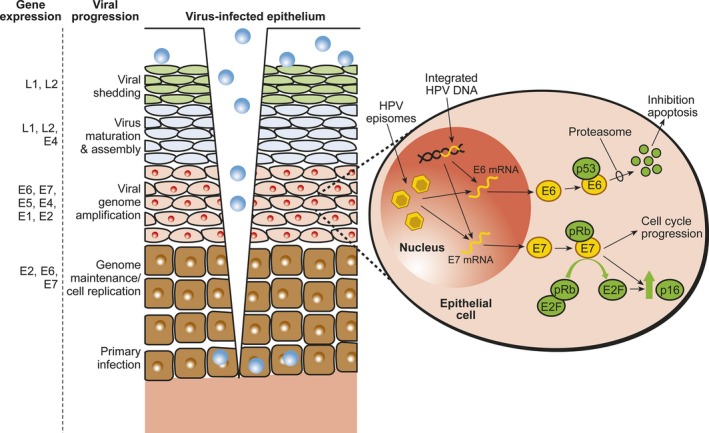Figure 3.

Human papillomavirus (HPV) infects the basal cells of the stratified squamous epithelia which become exposed after wounding or micro trauma. Virus particles are produced only in the surface of the epithelium, from where they are shed into the surroundings to infect new target cells. In the nuclei of basal cells, the viral genome remains as a low‐copy plasmid. Expression of viral proteins is regulated by differentiation of the infected cells during their movement toward the epithelial surface. At an early stage of the infection, viral DNA is replicated, along with cellular DNA, during cell division at S‐phase. At some point, a switch from stable replication (genome maintenance) to vegetative viral DNA replication will occur to allow the production of genomes for packaging into virions encapsulated by L1 and L2. Thousands of virus particles are produced per cell. After viral integration of high‐risk HPVs, the expression of E6 and E7 genes are permanently upregulated. HPV E6 binds and degrades p53, which leads to inhibition of apoptosis. HPV E7 protein binds and degrades the retinoblastoma tumor suppressor protein, pRB, disrupting its interaction with the transcription factor E2F. The release and activation of E2F results in expression of S‐phase genes and cell‐cycle progression. Upregulation of p16 is induced by HPV‐mediated disruption of E7, which leads to cellular accumulation of p16.
